Why You Should Care About Condensation On Your RV Windows
When water vapor cools and becomes liquid, condensation is the result.
So where does water vapor in an RV come from?
Not only is it already in the air, based on how humid it is, but it’s also created when you breathe, cook and shower in your camper or van.
Related Product: Use a Den-Dry RV Mattress Underlay (click to view on Amazon) to prevent mold from growing underneath your camper mattress.
But why does condensation show up on your windows, metallic parts, and sometimes even make your floor feel wet?
Because it sticks to cold surfaces.
If it’s cold outside and there’s a lot of water vapor in the air inside your camper, it will create condensation and stick to your windows, and that’s when you see it.
The reason why it’s something that you should care about is there’s lots of water hanging out in your trailer when the humidity is high.
This water might not seem bad at first, but over time this moisture can cause issues with mold, rotten wood, and corrosion.
Just because you haven’t seen any mold doesn’t mean it’s not there.
It can start growing in the walls, under your shower, mattress or floors, and other places you don’t see every day.
RV Life Hack: Stop Moisture & Mold Growth Under RV Mattress
Eventually, you could end up with water and mold damage.
This is why it’s important to take care of and reduce condensation and moisture inside your RV.
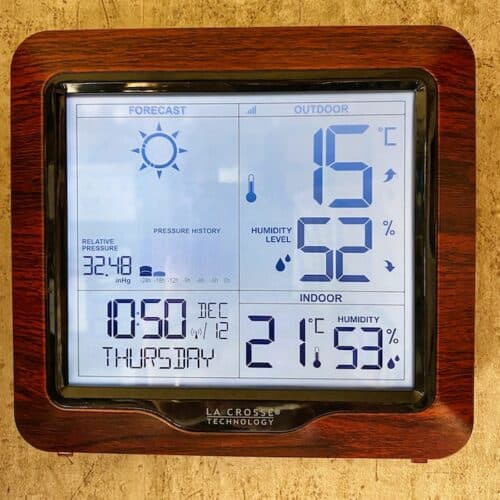
How To Monitor Relative Humidity In Your RV
The first step to reducing moisture and water vapor inside your trailer is knowing how much there is.
We want to stay between 35 and 50 percent humidity, which is the ideal level both for our bodies and to reduce the risk for mold growth.
When it comes to monitoring the relative humidity inside your RV, a weather station will be the easiest way.
We’ve written a post about the best weather stations for RVs that you can find by clicking here.
The most basic battery powered option that will tell you temperature and humidity both indoors and outdoors is the ThermoPro TP65 (click to view on Amazon).
If you just want to know the indoor humidity and temperature, ThermoPro also makes an even simpler version called the ThermoPro TP50 (click to view on Amazon).
14 Ways To Lower Humidity And Reduce Condensation In Your RV
When you know how humid it is both indoors and outdoors you can take steps to control it.
You don’t need to follow all these tips down below exactly to stop mold from growing inside your RV, but keep them in mind and use them as needed.
Let’s get to the tips.
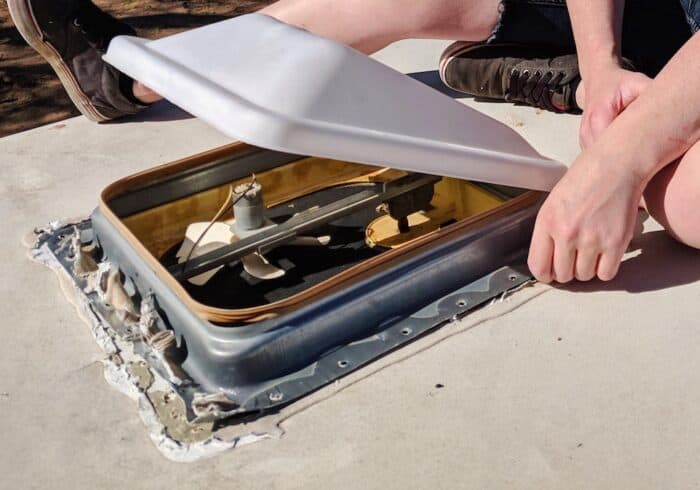
1. Exhaust Fans
Most trailers come with a kitchen and a bathroom fan.
Using both of these whenever you are cooking or showering is a good way to reduce relative humidity, which will help reduce condensation.
Other times it can be a good idea to run your exhaust fans is while you’re doing dishes, boiling water, or bathing.
While most trailers come with a bathroom fan, they’re often very tiny and useless in terms of air circulation.
They’re relatively easy to upgrade though.
Two popular RV fans are the Maxx Air (click to view on Amazon) and Fan-Tastic (click to view on Amazon).
Recently, I have seen more campers and trailers come with higher quality fans already installed.
If your trailer is relatively new, you might already have a great one.
See Also: How To Easily Replace An RV AC With A Fan, Vent, or Skylight
2. Take Wet Clothes & Towels Outside
Leaving wet clothes and towels hanging in your trailer to dry will release that water into the air.
If possible, hang your towels and clothes outside.
If it’s not possible, hang them in the bathroom with the exhaust fan on, and the door closed.
This way the water vapor won’t be spread as much around the whole camper and the exhaust fan will suck out the warm, humid air.
See Also: How To Do Laundry Efficiently When Boondocking Or RV Camping
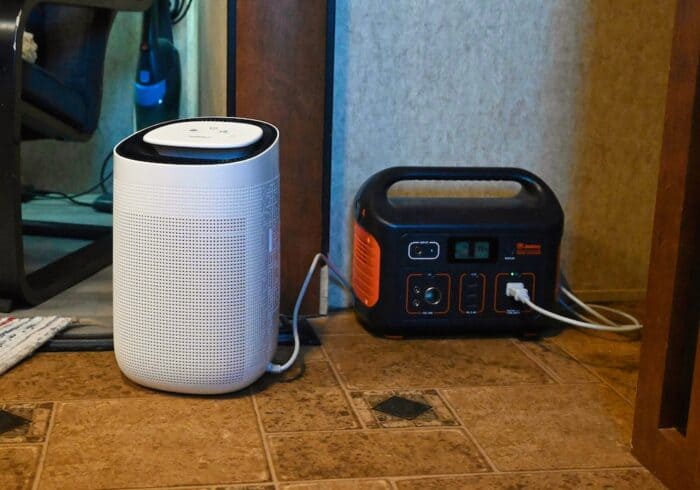
3. Dehumidifier
A small dehumidifier can decrease the relative humidity in your trailer.
I bought one a couple of weeks ago when we started having condensation issues.
So far it has done a great job at keeping the humidity inside our 30 feet trailer low through rainstorms and moderate humidity outdoors.
You can check out this post to see the best small dehumidifiers for RV use here.
Remember that what you’re looking for is a dehumidifier, not a humidifier that does the opposite of what we want.
If you are connected to power and have the ability to run your RV air conditioner that will also help take condensation out of the air inside your camper.
If you’re camping in very humid areas you may need to run your RV AC and a dehumidifier.
Related: Do I Need To Run A Dehumidifier When The RV AC Is Running?
4. Inside Temperature
The temperature inside your RV matters.
By raising the temperature in your trailer, there will be less condensation on your windows.
If you can’t run a heater, it can be as easy as closing the curtains or your blinds to increase the temperature around your windows.
5. Cooking & Showering
If you’re in humid areas, and the weather allows, cook outside!
Sometimes you can even shower outside, or at least use the campground facilities if you have access to them.
If you have to or would rather cook or shower inside, remember to turn on the exhaust fans to not fill the air with excess water vapor.
Another thing about cooking is using lids that will reduce the water vapor released from steam in the air.
See Also: Best Folding Camping Tables (All Types Reviewed)
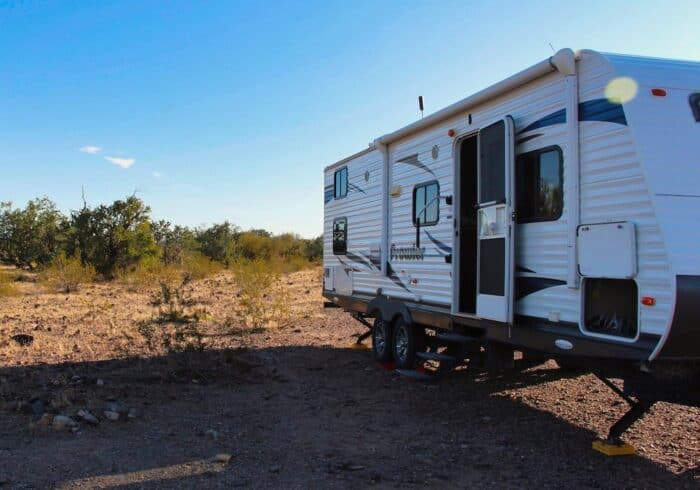
6. Good Circulation
A crucial thing to do is to circulate the air inside your trailer. This is especially important for closets and cabinets.
By leaving the door slightly open to these, the temperature will be the same as in the rest of the camper, which will prevent condensation.
Opening a window can let out hot moist air as well.
7. Open Doors & Windows
Opening a window or a door can help to ventilate and reduce condensation as long as it’s not raining outside.
This will help to circulate the air and bring in fresh air.
This is another reason to have a weather station like the ThermoPro TP65 (click to view on Amazon).
Knowing whether it’s more or less humid outside than inside and if you should open a window or not.
8. 35% – 50%
By monitoring and making sure that the relative humidity inside your trailer stays between 35 and 50 percent, you can prevent and reduce condensation.
Condensation can and will still happen, but this way you can at least make sure that you’re doing what you can to prevent mold from growing.
There is no need to panic if the humidity is suddenly at 70%.
But letting it happen over and over without doing anything will give mold time to grow, and the risk is higher that you’ll have to deal with it in the future.
See Also: Den-Dry Mattress Underlay Review – Stop RV Mattress Mold
9. Moisture Absorber
Moisture absorbers like DampRid (click to view on Amazon) or the Eva-Dry (click to view on Amazon) can be placed around your trailer to attract and trap excess moisture from the air.
I recommend putting these in closets and cabinets where there might be excess moisture.
When are DampRids better than a small dehumidifier?
A mix of both is the best.
If you’re boondocking a lot and don’t have access to electricity (which you need for a small dehumidifier, around 20-100 watts depending on choice), DampRid will be an excellent way to control humidity.
They’re not as effective as a good dehumidifier, but they’re certainly better than nothing.
10. LED Lights
Incandescent lights produce more heat than LED and fluorescent lights and can contribute to condensation in your roof with prolonged use.
Installing LED lights (click to view on Amazon) might seem expensive at first, but with longer lasting lights and less heat, you will save money in the long run.
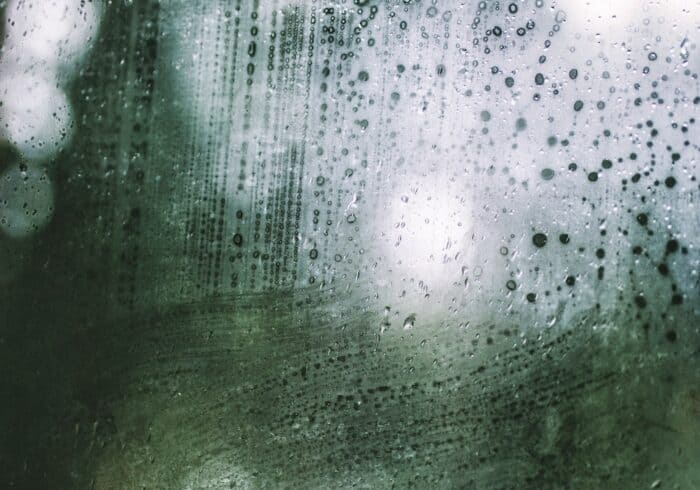
11. Wipe Away Moisture
If there is condensation on your windows or vents, wipe it off.
The damage from condensation and high humidity occur when that water gets to drip down and get stuck in areas with no circulation.
Grab a towel, wipe off your windows, and hang that towel outside for it to dry, or hang it in your bathroom with the exhaust fan turned on.
12. Mattresses, Closets, Cabinets
Have you ever seen a moldy mattress? It happens because of the moisture from body sweat that gets stuck in the bed.
Keeping damp clothes in a closed closet can do a lot of damage on its own even if the humidity in your trailer is at reasonable levels.
As mentioned above, closets and cabinets are also areas where condensation can occur if you’re not careful.
An easy way to reduce condensation in these areas is to leave the door open to the air can circulate, and the temperature can increase.
You can read more about how to prevent mold growth on an RV mattress in this article here.
13. Air Conditioner
One of the best ways to reduce humidity inside your camper is to run the air conditioner.
Air conditioners cool houses and trailers by removing heat and moisture which will lower humidity.
The downside with air conditioners is that they use a lot of energy so this will only be a viable option if you have hookups or a large generator.
See Also: The Best Camping Gas Generators That Will Run Your RV AC
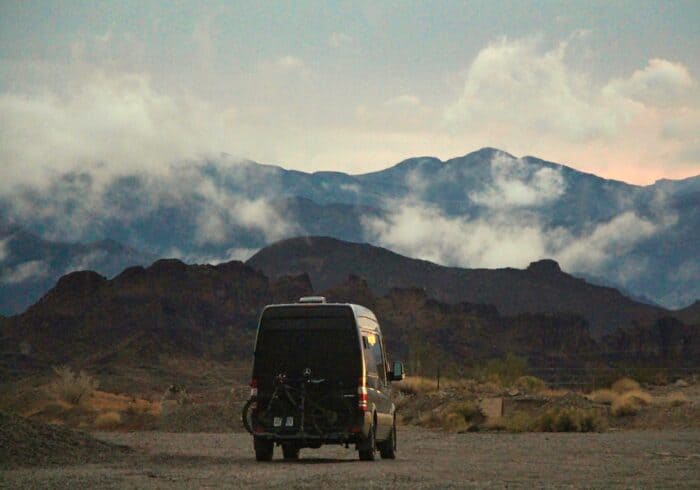
14. Planning
It might seem obvious to some, but others forget that some places are much more humid than others. The southeast is especially known for being more humid.
A good weather forecast will often tell you the expected humidity.
See Also: Best Deep Cycle RV Battery (AGM, SLA, 12V, 6V)
If you won’t have access to electricity to run a dehumidifier, you might want to consider the place that is expected to be less humid than the other.
Don’t change your trip to where it adds 10 hours of driving of course, but use common sense and plan and both you and your trailer will be more comfortable.
Let me know if you have any thoughts about the post, something to correct or something to add. Together we can help each other keep our campers mold-free!

